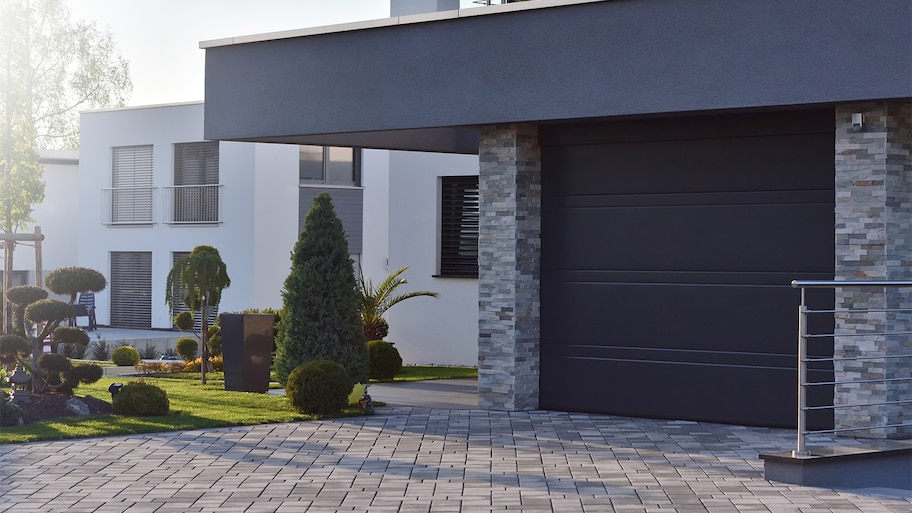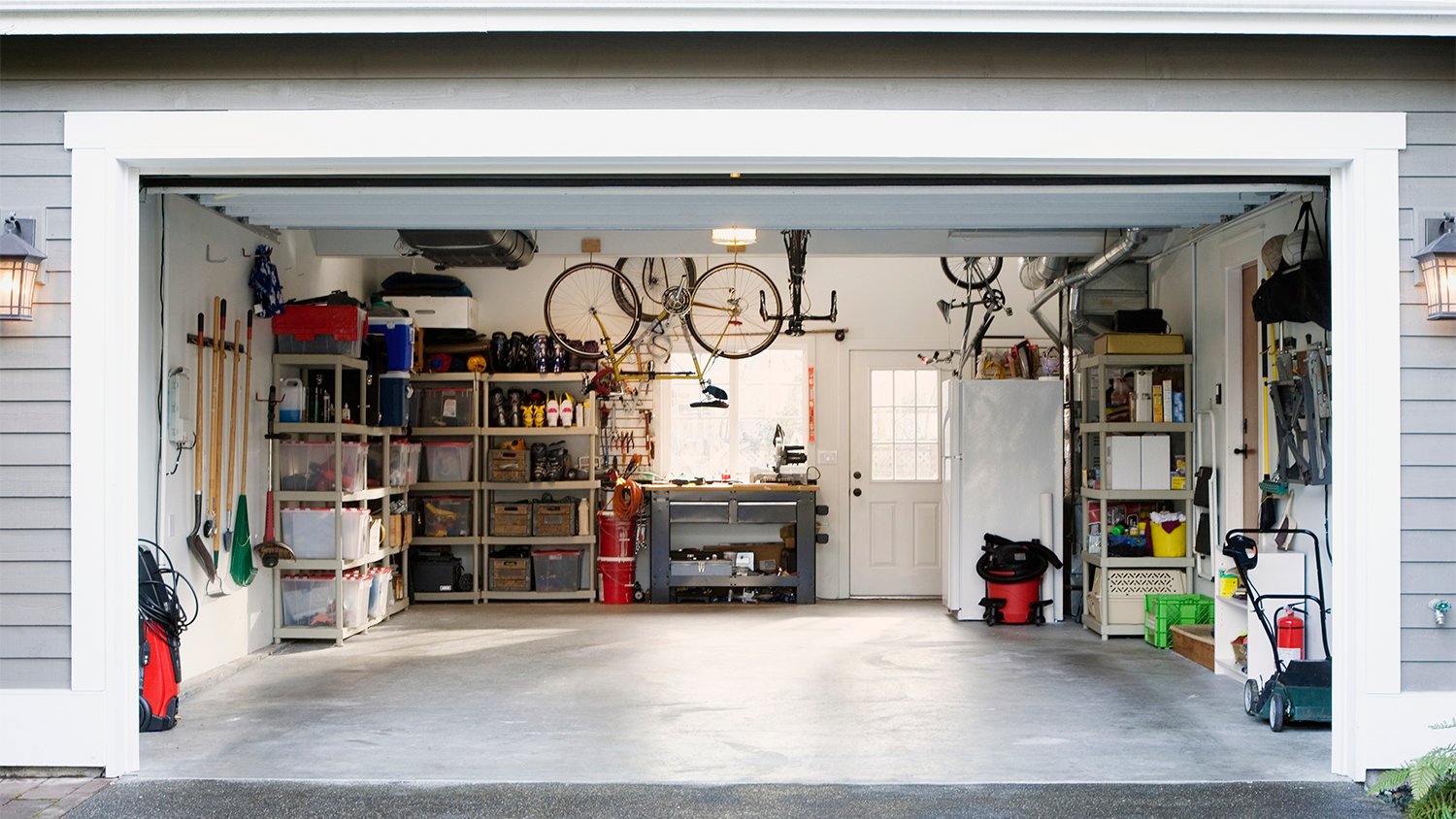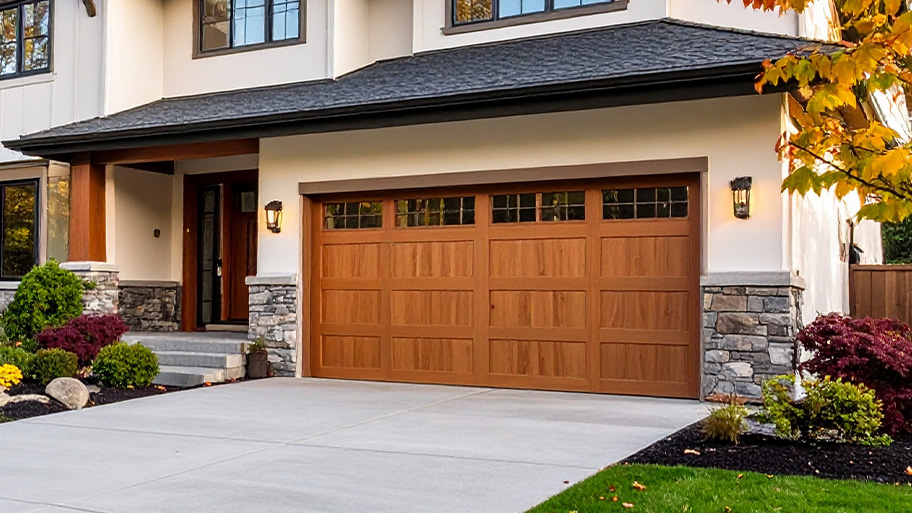
Our guide breaks down pricing factors, spring types, and why professionals help ensure safety and longevity. Learn what to expect and budget for your repair.
Build this handy custom garage door screen in a single afternoon


Maybe you want to convert your garage space into a home gym or entertainment area, or you're the type of DIYer that likes to work in the fresh air but wants the protection of a garage on a nice day.
In either case, why not turn your garage into a bug-and-debris-free semi-outdoor space? By building a garage door screen, you can effectively turn your garage into a terrace for your hobbies or relaxation.
Learn how to build your own DIY garage screen door in this simple guide.
Before slicing into that roll of mesh screen, you’ll need to decide which type of garage screen door you want as a temporary alternative to your garage door. This guide will walk you through how to build a simple zip-up garage door screen. When it comes to the cost of installing new screen doors, there are more complex projects, such as retractable or sliding screen doors you might consider DIYing. Each comes with advantages, so consider them carefully.
For example, a sliding screen door is more challenging to install DIY, but can hook up to your opener. Just note that you’ll run into issues with your screen functioning if your garage door opener doesn’t work at some point. If you envision a more complex screen door rather than a simple zip door, ask a garage door installer near you for a quote on all these models to see which fits your goals and budget.
With a tape measure, gather the dimensions of the doorway space you're trying to cover with a screen. You'll need the length and width, along with any obstacles that may change your measurements. Double-check these measurements, as you want to get them right before ordering supplies and making your screen. If you’ve replaced your garage door recently to spruce up the space, you might be able to skip this step if you already know the dimensions.
The standard garage door size is 8 feet wide and 7 feet tall for a single door, so the likelihood is that you’ll need a roll of screen that’s at least 8 feet wide.
With a box cutter, carefully cut your screen to fit the doorway section. Be sure to adhere to the measurements you took before, and add at least an extra inch to both sides to account for seam allowances. If you're worried it might not reach, add another inch or two on top of that. You can always cut away the excess later.
Lastly, you’ll need to cut a straight line down the middle to make room for the zipper attachment.

Line your zipper up with the two pieces of screen netting up with the zipper, then staple or glue the two pieces together. You can insert safety pins first to keep things in place while you work.
If you're feeling crafty (and want to build something you know will last a long time), break out the sewing machine and double-stitch the zipper instead.
Be sure to use a double-sided zipper so you can enter and exit your garage from both sides.
Similarly, you'll need to install one-half of the velcro fasteners to the perimeter of your screen. You can do this with any of the options mentioned above. Some velcro fasteners come with sealing glue attachments that can make the job easier, but they may cost a few bucks extra.
Line the inside of your garage with the other end of the velcro fastener strips you picked up earlier. You’ll need enough to cover the length of both sides as well as the overhead space, which may require a stool or ladder to reach. Remember to use caution when using a ladder.
It’s a good idea to disinfect or towel off the area where velcro will go on your walls first, as dirt can make the sticky adhesive work less effectively. You can also staple the velcro strips to the frame of your garage door to avoid them coming loose in the future.

Attach your new double-sided garage door screen to the velcro fasteners. It should fit snugly over the frame of your garage. Cut away any excess material as needed with your box cutter.
You're done! Now you can put your tools away and enjoy the fruits of your labor, knowing the mosquitos will have to get their kicks elsewhere.
The cost to install a garage door screen yourself starts at around $50, as an 8-foot by 25-foot roll of fiberglass screen will cost around $40, and the job requires very few other materials. A professionally installed garage door screen usually requires custom work and will cost around $1,400 for parts and labor. Custom-making your screen will take your professional some time, which adds quite a lot to the base material cost.
Home improvement stores and even online retailers carry all-in-one garage screen kits, which could also make life easier. Be sure to read reviews, as the less expensive kits may not be durable. Low-cost screens break relatively easily, and the cost for screen repair can be as much as $150.
From average costs to expert advice, get all the answers you need to get your job done.

Our guide breaks down pricing factors, spring types, and why professionals help ensure safety and longevity. Learn what to expect and budget for your repair.

Replacing a garage door is necessary to add security and value to your home. Learn how each door type affects the total cost of this project in Columbus, OH.

This guide will help you determine the true cost of installing garage door openers. You’ll need to consider type, horsepower, and other factors.

Our guide walks you through how to program a garage door remote to your mounted opener in three easy steps and in just a few minutes.

Explore the different types of garage doors for your home, including their durability, cost, and the pros and cons of each option.

Like any mechanical system, garage door openers can break. Here are the top questions to ask about garage door opener installation or replacement.